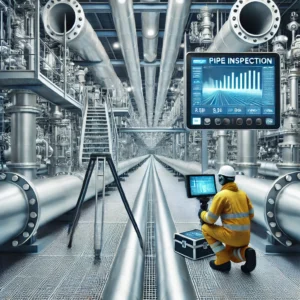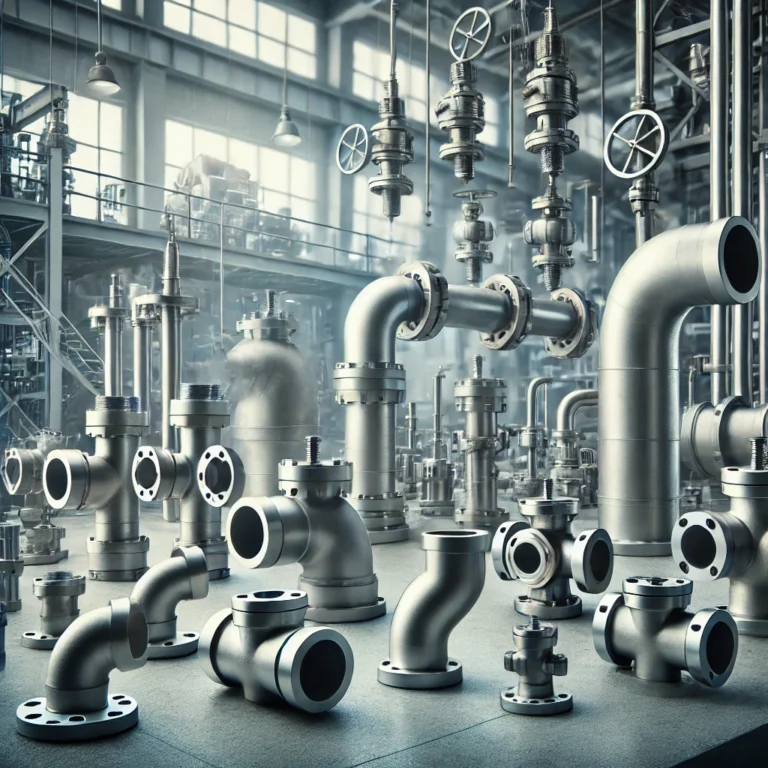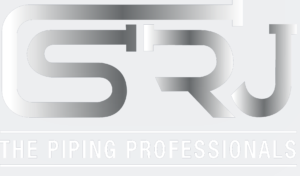Ensuring Piping Quality Control in Industrial Projects
Table of Contents
Pipes are much like silent performers, essential components within the grand orchestra of industrial operations. If a pipe fails, it’s not just a minor issue—it can lead to massive disruptions. Ensuring high quality in your piping systems is about more than just meeting basic standards; it’s about preventing costly failures and maintaining smooth operations.
From rigorous inspections to thorough testing procedures, this guide explores how to ensure your piping systems function efficiently and safely. Let’s dive into best practices for quality control in industrial piping.
The Importance of Quality Control in Piping
Piping quality control is critical for the success and safety of any industrial project. Pipes transport essential materials like water, gases, and chemicals, making them the arteries of your business. Ensuring their quality is vital to avoid leaks, ruptures, or failures that could lead to expensive downtime, environmental hazards, or even safety risks.
Quality control ensures every component conforms to strict standards, safeguarding your infrastructure and ensuring continuous operations.

Critical Quality Control Procedures
Several testing methods are crucial for ensuring the integrity and security of your piping systems. These tests focus on detecting flaws, determining material strength, and ensuring compliance with specifications.
1. Destructive Testing
Destructive testing pushes a sample to its breaking point to understand its limits and durability. Although the material is sacrificed, this process provides invaluable insights into the strength and quality of the remaining components.
2. Non-Destructive Testing (NDT)
Non-destructive testing methods, such as ultrasonic and radiographic testing, examine the pipes without causing damage. These techniques identify internal flaws that might be missed during visual inspections.
3. Pressure Testing
Pressure testing is conducted post-installation to ensure the piping can handle the maximum operating pressure without leaks or failure. It’s crucial to verify the system’s integrity before it goes live.
Visual Inspection and Its Role
While advanced testing methods are essential, regular visual inspections are equally important in maintaining piping quality. Trained inspectors can detect surface-level issues like cracks, corrosion, and poor welds before they become major problems. Visual inspections provide a first line of defense, helping to maintain the desired quality standards in your piping systems.
The Role of Raw Materials in Quality Control
High-quality raw materials form the foundation of a reliable piping system. Using subpar materials can lead to premature failures, so it’s essential to ensure that every material meets the required quality standards.
Material Verification
This process checks the chemical composition and mechanical properties of the materials used. By verifying that the raw materials meet specific criteria, you can ensure that the finished product will perform well in its intended application.
Wall Thickness and Tensile Strength
Wall thickness and tensile strength are critical parameters that determine a pipe’s ability to withstand operational stresses. Regular checks on these aspects during production help ensure that the pipes will perform reliably under real-world conditions.
Industry Standards and Specifications
Meeting industry standards is non-negotiable when it comes to piping systems. Various organizations, such as the American Society of Mechanical Engineers (ASME) and the International Organization for Standardization (ISO), provide guidelines to ensure that piping systems meet the demands of industrial operations.
Standards and Specifications
These guidelines cover everything from material selection to testing procedures. Adhering to these standards guarantees that every component in your piping system meets the necessary quality criteria.
Training and Updates
Piping and quality control are constantly evolving fields. Keeping up with the latest industry standards and ensuring your team is trained on new procedures is essential for maintaining compliance and achieving high-quality results.
Continuous Monitoring and Improvement
Quality control is not a one-time task; it’s an ongoing process that requires regular monitoring and adjustments. Continuous improvement ensures that your piping systems remain efficient and reliable over time.
Routine Audits
Regular audits help identify weaknesses in the system before they become critical issues. These audits should include both visual inspections and advanced testing methods to cover all potential problem areas.
Feedback Loops
Establishing a feedback loop allows you to use the data gathered from inspections and tests to improve future projects. This continual improvement process ensures that each new project builds on the lessons learned from previous ones.

Pro Tips
Piping systems are often overlooked but are critical to the smooth and safe operation of industrial facilities. Ensuring quality control in your piping systems protects your investment, infrastructure, and the people who rely on it.
By following rigorous quality assurance procedures—from visual inspections to advanced testing methods—you can create a piping system that is not only compliant with industry standards but also efficient and reliable. Quality control is not just about preventing failures; it’s about building strong, durable systems that will stand the test of time
Conclusion
Ensuring piping quality control in industrial projects is vital for safety, efficiency, and longevity of piping systems. By adhering to rigorous standards, conducting thorough inspections, and implementing best practices, you can prevent costly failures and optimize performance. For a deeper understanding of quality standards, explore Piping QA/QC Standards and Best Practices. To learn about the role of inspections, check out Key Benefits of Professional Piping Inspection Services. For ongoing maintenance, refer to the Comprehensive Maintenance Checklist for Industrial Piping Systems. Additionally, consult American Society for Quality (ASQ) – Quality Control Standards and International Organization for Standardization (ISO) – Piping Standards for authoritative guidelines. Prioritizing quality control today sets the foundation for reliable and efficient industrial piping systems tomorrow.
Need Help with Piping Quality Control?
SRJ Piping India ensures top-tier quality checks and compliance across all stages of your industrial piping projects.
